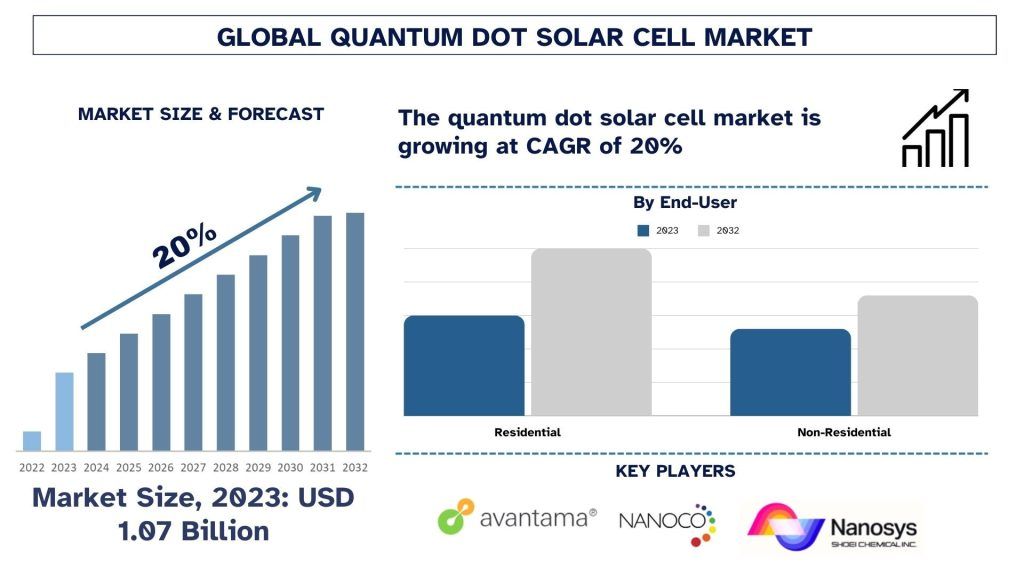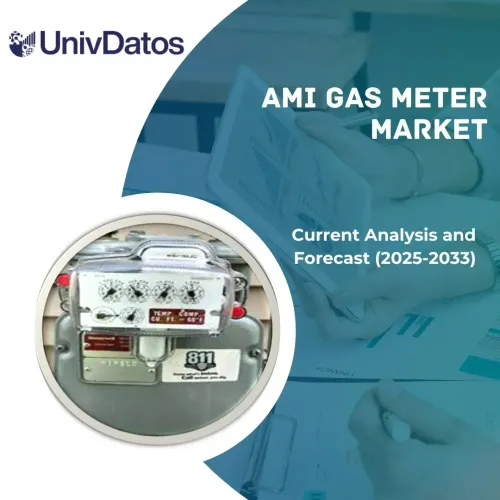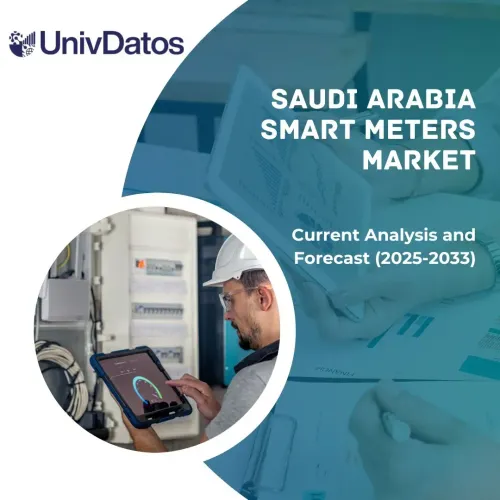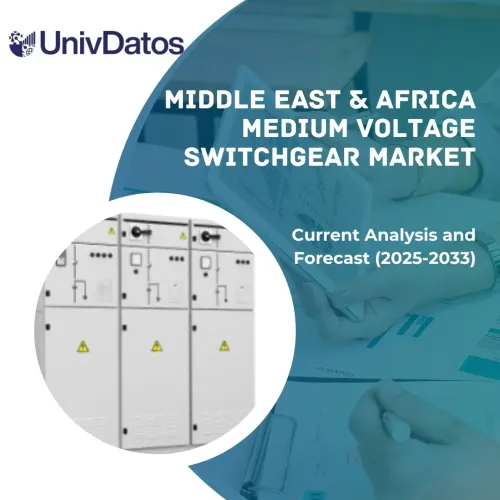- Home
- About Us
- Industry
- Services
- Reading
- Contact Us
Quantum Dot Solar Cell Market: Current Analysis and Forecast (2024-2032)
Emphasis on Product Type (Quantum Dot Solar Cells, Quantum Dot Hybrid Solar Cells, Quantum Nanowire Solar Cells); By Material (Cadmium-Based, Cadmium-Free), End-User (Residential and Non-Residential), and Region/Country
Quantum Dot Solar Cell Market Size & Forecast
The Quantum Dot Solar Cell market was valued at approximately USD 1.07 Billion in 2023 and is expected to grow at a robust CAGR of around 20% during the forecast period (2024-2032) owing to the enhanced efficiency and potential for significant cost reductions in solar power generation primarily drive the market for quantum dot solar cells.
Quantum Dot Solar Cell Market Analysis
The global quantum dot solar cell market has been experiencing a steady growth rate of 20%, This growth is fueled by the expanding interest in renewable energy sources in electrical generation and using nanotechnology and quantum dot solar cells’ higher efficiency in comparison with photo voltaic cells. Quantum dot solar cells also have some benefits over traditional photovoltaic devices: quantum dot solar cells can absorb more light than high-quality silicon crystals, and these photovoltaic technologies’ bandgap can be tuned to match the solar spectrum more closely. It is against this backdrop that governments across the globe are promoting the use of cleaner energy to address climate change issues, quantum dot solar cells are being advanced as the most efficient devices for increasing the efficiency of solar power generation.
Quantum Dot Solar Cell Market Trends
This section discusses the key market trends influencing the quantum dot solar cell segments as identified by our research experts.
Colloidal Quantum Dot Solar Cell Type Transforming Industry
The colloidal quantum dot solar cells segment currently dominates the market and is expected to dominate in the forecast period. The major factors that contributed to the domination of colloidal quantum dot solar cells in the quantum dot solar cell market include ease of manufacturing, tunability, flexibility of applications, and commercial interests. Indeed, the dots are made by some out-of-box simple solution-based methods, making them easier and cheaper than those for core-shell quantum dots. As such, this makes scaling easier and enables integration into existing lines more feasible. Moreover, colloidal quantum dots can be deposited on several substrates using spin-coating or even spray-coating, making them very versatile for flexible and lightweight solar cells or any other purpose. In addition, the dots also have good tunability because of their optical and electronic properties. By modulating the size and composition of the quantum dots, researchers have a clear route to optimize the absorption spectrum of their designs to the solar spectrum.
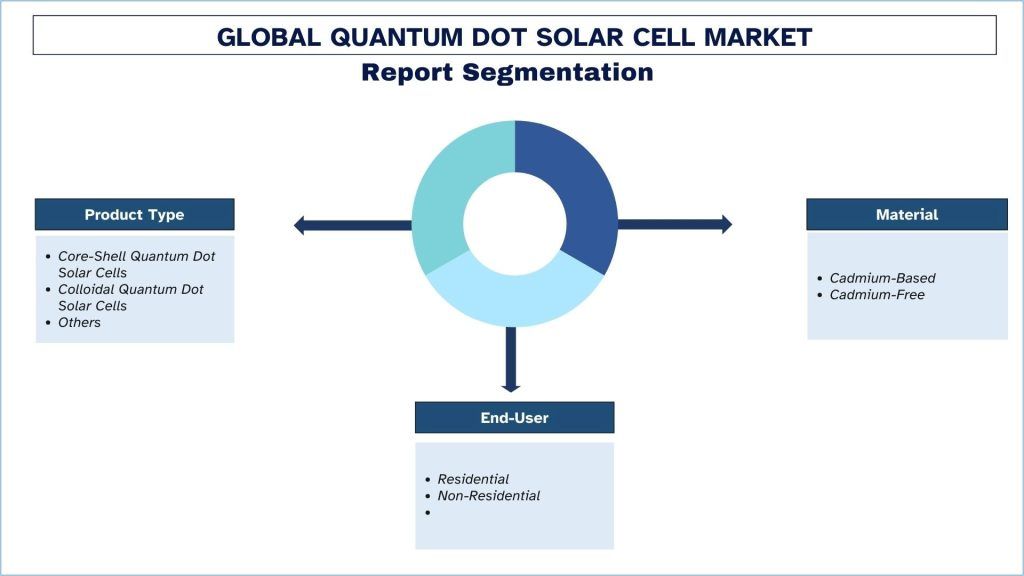
Asia Pacific Dominated the Market in 2023
The Asia Pacific quantum dot solar cell market is growing quickly due to the commitment to set high renewable energy targets, increased research and development undertaken, and a sound manufacturing industry. Cells like China, Japan, South Korea, and Singapore are the pioneers in this technology. Specifically, China aims to reach 2060’s carbon neutrality level and become a world leader in solar implementation. Japan and South Korea are deliberately seeking efficiency over large-area implementation to avoid land issues. It has accumulated rich competence in nanotechnology, material science, and advanced manufacturing, especially focusing on the quantum dot. In China, Tsinghua University takes the lead in the study of quantum dot solar cells and cooperates with big electronic power and energy companies; The National Institute for Materials Science in Japan and KAIST in South Korea also have active research in this area.
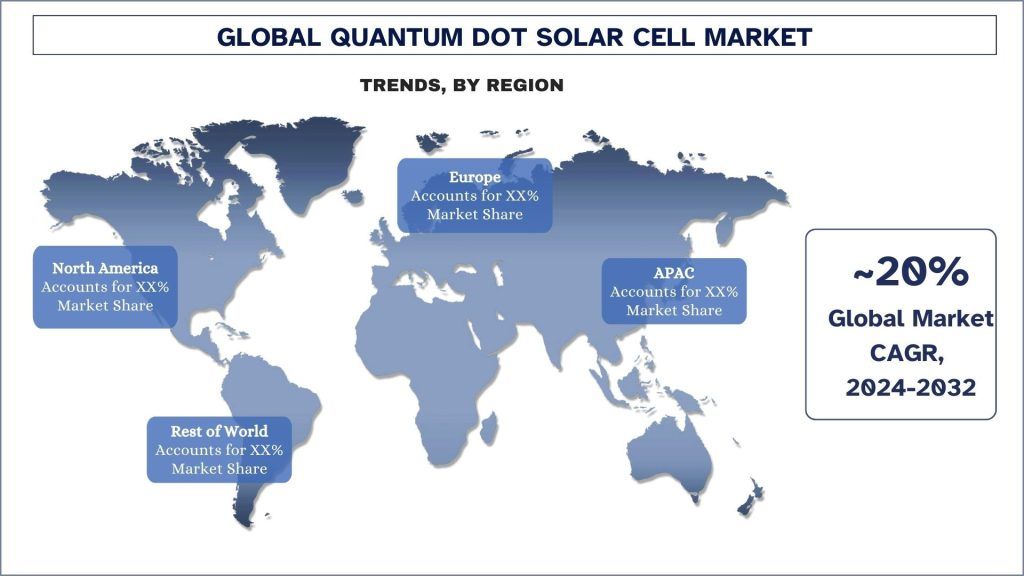
Quantum Dot Solar Cell Industry Overview
The quantum dot solar cell is competitive, with several global and international market players. The key players are adopting different growth strategies to enhance their market presence, such as partnerships, agreements, collaborations, new product launches, geographical expansions, and mergers and acquisitions. Some of the major players operating in the market are Avantama, Nanoco Group plc, Shoei Electronic Materials, Inc. (Nanosys), NNCrystal US Corporation, Ocean NanoTech, Quantum Materials Corporation, SAMSUNG DISPLAY Co., Ltd, Solex Energy Limited, UbiQD, Inc, and TFQD.
Quantum Dot Solar Cell Market News
- In August 2023, UbiQD, Inc., a New Mexico-based nanotechnology company, announced that it has entered into a joint development agreement with First Solar, Inc. to further collaborate on developing the potential to incorporate fluorescent quantum dot technology in advanced solar modules.
- In May 2021, Nanosys declared the acquisition of Glo, a leading technology company for microLED displays. Nanosys aims to enhance its development, increase its offerings, and adopt nano LED and microLED display technologies with the acquisition.
Quantum Dot Solar Cell Market Report Coverage

Reasons to buy this report:
- The study includes market sizing and forecasting analysis validated by authenticated key industry experts.
- The report presents a quick review of overall industry performance at one glance.
- The report covers an in-depth analysis of prominent industry peers with a primary focus on key business financials, product portfolios, expansion strategies, and recent developments.
- Detailed examination of drivers, restraints, key trends, and opportunities prevailing in the industry.
- The study comprehensively covers the market across different segments.
- Deep dive regional level analysis of the industry.
Customization Options:
The global quantum dot solar cell can further be customized as per the requirement or any other market segment. Besides this, UMI understands that you may have your own business needs; hence, feel free to connect with us to get a report that completely suits your requirements.
Table of Content
Research Methodology for the Quantum Dot Solar Cell Market Analysis (2022-2032)
Analyzing the historical market, estimating the current market, and forecasting the future market of the global Quantum Dot Solar Cell market were the three major steps undertaken to create and analyze the adoption of Quantum Dot Solar Cell in major regions globally. Exhaustive secondary research was conducted to collect the historical market numbers and estimate the current market size. Secondly, numerous findings and assumptions were taken into consideration to validate these insights. Moreover, exhaustive primary interviews were also conducted, with industry experts across the value chain of the global Quantum Dot Solar Cell market. Post assumption and validation of market numbers through primary interviews, we employed a top-down/bottom-up approach to forecasting the complete market size. Thereafter, market breakdown and data triangulation methods were adopted to estimate and analyze the market size of segments and sub-segments of the industry. Detailed methodology is explained below:
Analysis of Historical Market Size
Step 1: In-Depth Study of Secondary Sources:
A detailed secondary study was conducted to obtain the historical market size of the Quantum Dot Solar Cell market through company internal sources such as annual reports & financial statements, performance presentations, press releases, etc., and external sources including journals, news & articles, government publications, competitor publications, sector reports, third-party database, and other credible publications.
Step 2: Market Segmentation:
After obtaining the historical market size of the quantum dot solar cell, we conducted a detailed secondary analysis to gather historical market insights and share for different segments & sub-segments for major regions. Major segments are included in the report, such as product type, material, end-user, and region. Further country-level analyses were conducted to evaluate the overall adoption of testing models in that region.
Step 3: Factor Analysis:
After acquiring the historical market size of different segments and sub-segments, we conducted a detailed factor analysis to estimate the current market size of the Quantum Dot Solar Cell market. Further, we conducted factor analysis using dependent and independent variables such as product type, material, end-user, and regions. A thorough analysis was conducted of demand and supply-side scenarios considering top partnerships, mergers and acquisitions, business expansion, and product launches in the Quantum Dot Solar Cell market sector across the globe.
Current Market Size Estimate & Forecast
Current Market Sizing: Based on actionable insights from the above three steps, we arrived at the current market size, key players in the global Quantum Dot Solar Cell market, and market shares of the segments. All the required percentage shares split and market breakdowns were determined using the above-mentioned secondary approach and were verified through primary interviews.
Estimation & Forecasting: For market estimation and forecast, weights were assigned to different factors including drivers & trends, restraints, and opportunities available for the stakeholders. After analyzing these factors, relevant forecasting techniques i.e., the top-down/bottom-up approach were applied to arrive at the market forecast for 2032 for different segments and sub-segments across the major markets globally. The research methodology adopted to estimate the market size encompasses:
- The industry’s market size, in terms of revenue (USD) and the adoption rate of the quantum dot solar cell across the major markets domestically
- All percentage shares, splits, and breakdowns of market segments and sub-segments
- Key players in the global quantum dot solar cell in terms of products offered. Also, the growth strategies adopted by these players to compete in the fast-growing market
Market Size and Share Validation
Primary Research: In-depth interviews were conducted with the Key Opinion Leaders (KOLs), including Top Level Executives (CXO/VPs, Sales Head, Marketing Head, Operational Head, Regional Head, Country Head, etc.) across major regions. Primary research findings were then summarized, and statistical analysis was performed to prove the stated hypothesis. Inputs from primary research were consolidated with secondary findings, hence turning information into actionable insights.
Split of Primary Participants in Different Regions
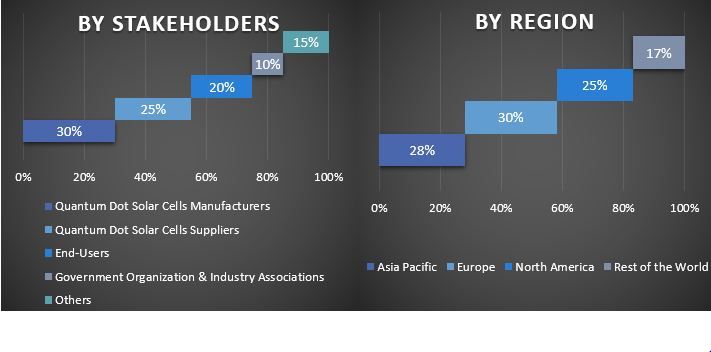
Market Engineering
The data triangulation technique was employed to complete the overall market estimation and to arrive at precise statistical numbers for each segment and sub-segment of the global quantum dot solar cell. Data was split into several segments and sub-segments after studying various parameters and trends in the product type, material, end-user, and regions of the global Quantum Dot Solar Cell market.
The main objective of the Global Quantum Dot Solar Cell Market Study
The current & future market trends of the global quantum dot solar cell were pinpointed in the study. Investors can gain strategic insights to base their discretion for investments on the qualitative and quantitative analysis performed in the study. Current and future market trends determined the overall attractiveness of the market at a regional level, providing a platform for the industrial participant to exploit the untapped market to benefit from a first-mover advantage. Other quantitative goals of the studies include:
- Analyze the current and forecast market size of the Quantum Dot Solar Cell market in terms of value (USD). Also, analyze the current and forecast market size of different segments and sub-segments.
- Segments in the study include areas of product type, material, end-user, and regions.
- Define and analyze the regulatory framework for the Quantum Dot Solar Cell
- Analyze the value chain involved with the presence of various intermediaries, along with analyzing customer and competitor behaviors of the industry.
- Analyze the current and forecast market size of the Quantum Dot Solar Cell market for the major region.
- Major countries of regions studied in the report include Asia Pacific, Europe, North America, and the Rest of the World
- Company profiles of the Quantum Dot Solar Cell market and the growth strategies adopted by the market players to sustain in the fast-growing market.
- Deep dive regional level analysis of the industry
Frequently Asked Questions FAQs
Q1: What is the global quantum dot solar cell's current size and growth potential?
Q2: What are the driving factors for the growth of the global quantum dot solar cell?
Q3: Which segment has the largest share of the global quantum dot solar cell by product type?
Q4: What are the emerging technologies and trends in the global quantum dot solar cell?
Q5: Which region will dominate the global quantum dot solar cell?
Related Reports
Customers who bought this item also bought

